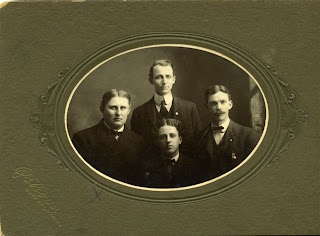The National Archives Announced today the successful completion of a major milestone of the Electronic Record Archives System in the following press release. It's exciting news for genealogists!
Washington, D.C. . . Archivist of the United States Allen Weinstein announced today the launch of a major initiative which lays the foundation for preserving electronic and all other records generated by the government and providing public access to them. The Initial Operating Capability of the National Archives Electronic RecordsArchives (ERA) is the beginning of far-reaching changes in the management of U.S. government records.
In its initial stage,
the new system will support the basic process of determining how long federal agencies need to keep records and whether the records should be preserved in the National Archives afterwards. ERA will support this process for all federal records, whether they are paper, film, electronic, or other media. In July, the National Archives will start moving approximately three and a half million computer files into ERA. These historically-valuable electronic records range from databases about
World War II soldiers to the State Department's central files on foreign affairs. The records eventuallywill be accessible online in ERA.
ERA is a multi-year project spearheaded by the National Archives and Lockheed Martin, the development contractor, to create a 'permanent' solution for the ever-changing challenge of preserving electronic records. Because new formats of electronic records are constantly being created and older formats become obsolete quickly, the 'permanent' solution cannot be a one-time fix. It has to be a dynamic system whichcan grow to accommodate ever-increasing volumes, be extended to deal with new formats, and evolve to enable records on obsolete formats to be accessed on new computers. The goal is to enable researchers 50 or 100 years from now to find and retrieve electronic records using the best technology available to them, regardless of what hardware or software was used to create them. ERA will also move record keeping out of filing cabinets and into cyberspace. Besides the direct benefit to government,
these capabilities will make it easier for citizens to discover what records the government has and to access them.In making the announcement, Professor Weinstein said "There has beena race against technology as we watch software become obsolete almost as soon as it is installed in our computers. All of us have stored personal memories or favorite music on 8-track tapes, floppy disks, or 8mm film. In many cases, these technologies are now relics and we have no way to access the stored information. Imagine this problem multiplied millions and millions of times---that's what the federal government is facing today. But thanks to ERA," he continued, "the technology for preserving electronic records is finally beginning to catch up with the technology for creating them. This Initial Operating Capability is a crucial step in ensuring that our recent history will be saved."
The ERA development has been shaped by extensive dialogue with stakeholders both inside the federal government and around the world. Four federal partners, who have been instrumental in testing the system, will start using ERA in September: the U.S. Patent and Trademark Office, the National Oceanographic Office, the National Nuclear SecurityAdministration, and the Bureau of Labor Statistics. Valuable input from these partners has been used to fine-tune the system.
Chairman of the Advisory Committee on ERA and co-inventor of the Internet Dr. Robert Kahn said "The Internet has made it possible for people using a computer to instantly communicate across continents and around the world. When the full system is deployed,
ERA will make it possible for people to access U.S. government information across generations."In 2010, the National Archives intends to make the system available to the public. Ultimately, the Archives expects the system to be able to preserve and provide access to ever-increasing volumes of important electronic records of the federal government, even long after the hardware and software used to create them has become obsolete.









